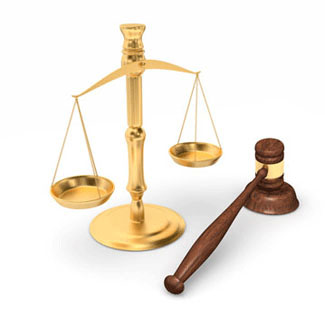
Johnson's Baby Powder Packaging Implied The Product's Safety
Johnson & Johnson marketed Johnson's Baby Powder to mothers and women of color despite knowing it contained asbestos.
Tuesday, September 21, 2021 - Johnson & Johnson's representation of the safety of their product took the form of the image of the iconic "Johnson's Baby Powder Baby." The happy, smiling baby effectively told consumers that the product was so safe that it could be used by their vulnerable loved ones. The company might as well have written, "So safe that you can use it on your newborn baby," as the baby picture implied as much. Mothers and other women were deceived by Johnson's Baby Powder packaging into thinking that the product was safe. The babyface imagery would not have been so sinister had the company not known since 1971 that the talc they were using was contaminated with asbestos, a newly-discovered carcinogen. Reuters recently wrote a report following their investigation, that claims the company knew for decades that asbestos lurked in their talc supply. Internal company memos revealed in prior talcum powder cancer trials showed that the company knew that their talc was testing positive for asbestos. Experts agree that there is no acceptable amount of asbestos contamination.
CourtRoomViewNews (CVN) is covering the current Johnson & Johnson talcum powder cancer lawsuit live.
To summarize, the case will be the first one in Missouri state court since the start of the pandemic and pit three women that claim their ovarian cancer was caused by using Johnson's Baby Powder and Shower to Shower products regularly for decades. Johnson's Baby Powder ovarian cancer trials have gathered worldwide attention for reasons like the multi-billion dollar jury awards that have been granted, and the minor panic they created in the minds of women and mothers who were using Johnson's Baby regularly, several times per day, after diapering their infant. Talcum powder cancer lawyers for the women that have developed ovarian cancer site the everyday nature of using baby powder to make their infants feel drier and smoother, and to promote healing from chafing. This behavior carried over into adulthood and women use Johnson's Baby Powder in between and after every shower, prompting the labeling of a new talc-based "Shower to Shower" product. "Asbestos-related diseases usually arise after years of regular exposure to the toxic mineral. Long-term exposure can occur with baby powder. Many people initially received talcum powder as babies to prevent diaper rash, and they continued using the product into adulthood," according to Asbestos.com.
Rather than inform the public of their asbestos problem, Johnson & Johnson went to great lengths to cover up the fact by exerting influence on cosmetics industry lobbying associations to coerce the Food and Drug Administration into accepting talc asbestos testing methods that were too insensitive to detect the deadly mineral. It is not unreasonable to assume that talc would be contaminated with asbestos since both are natural minerals found adjacent to or overlapping each other. Both are mined by blasting the rock into the air and scooping up the dusty deposits, talc, asbestos, and all. The actual talc asbestos levels will be brought to light in the coming weeks as Daubert hearing-approved asbestos testing experts will testify on behalf of talcum powder cancer plaintiffs suing the company for covering up what they knew.
 OnderLaw, LLC -
OnderLaw, LLC -